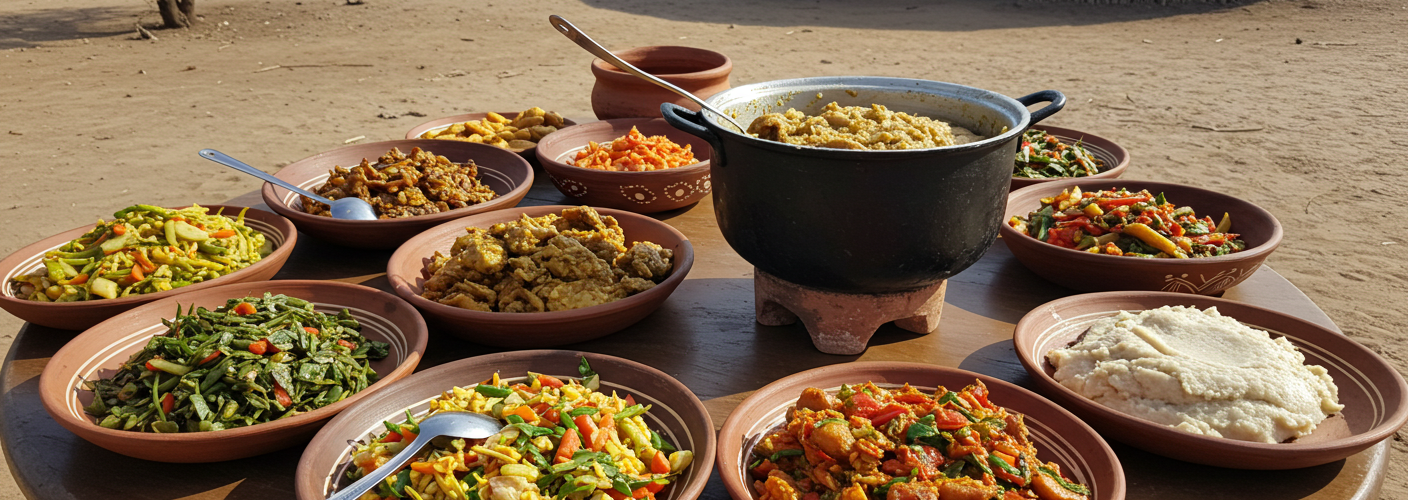Botswana, a landlocked country in Southern Africa, is known for its stunning landscapes, wildlife, and a culture deeply rooted in traditions. One of the most integral aspects of Botswana’s identity is its food. The culinary scene here reflects a rich blend of indigenous ingredients, cultural influences, and traditional cooking methods that have evolved over generations.
Traditional Ingredients
Botswana’s cuisine primarily revolves around staples such as maize, sorghum, and millet. These grains serve as the foundation for many traditional dishes. One of the most popular dishes is called “pap” or “stywe pap,” a thick porridge made from maize meal. This dish is often served with meat, vegetables, or sauce, making it a versatile accompaniment to various meals.
Beef is the most widely consumed meat in Botswana, thanks to the country’s extensive cattle farming. Botswana is known for its high-quality beef, which is often grilled or cooked in stews. Another local favorite is “seswaa,” a traditional shredded beef dish that is slow-cooked and seasoned with salt. It is often served during special occasions and celebrations.
Local Delicacies
In addition to staples, Botswana boasts a variety of local delicacies that highlight its unique culinary identity. For instance, “biltong” is a popular dried meat snack that is typically made from beef or game. The marinated and air-dried meat has a distinct flavor that is enjoyed by locals and visitors alike.
Another cherished dish is “mopane worms,” which are not actually worms but the larvae of the mopane moth. Boiled or fried, these protein-rich delicacies are a sustainable food source and are often seasoned with spices to enhance their flavor.
Cultural Influences
Botswana’s food culture has been influenced by various factors, including neighboring nations and colonial histories. For example, the presence of Indian cuisine is evident in some of the spices and cooking techniques used in local dishes. The integration of curry and other spiced meals has enriched the culinary offerings across the country.
Moreover, the diverse ethnic groups within Botswana, including the Tswana, Kalanga, and Basarwa people, each contribute unique dishes and customs that reflect their histories and social practices. This diversity results in a vibrant food scene that offers something for everyone.
Contemporary Cuisine
In recent years, there has been a surge of interest in modern interpretations of traditional Botswana food. Chefs and food enthusiasts are experimenting with traditional ingredients to create innovative dishes that appeal to a younger audience while still preserving cultural heritage. Restaurants in urban areas like Gaborone are increasingly incorporating local ingredients into their menus, blending traditional flavors with contemporary culinary techniques.
Conclusion
Botswana’s food is more than just sustenance; it is a celebration of identity, tradition, and community. From the simple joys of a hearty pap meal to the adventurous taste of mopane worms, the culinary landscape of Botswana offers a rich tapestry of flavors that tell the story of its people. As the country continues to evolve, so too will its cuisine, ensuring that the heritage of Botswana food remains strong while embracing the future. Whether you’re a visitor or a local, exploring the flavors of Botswana is an unforgettable journey that showcases the heart of this remarkable country.




Add comment